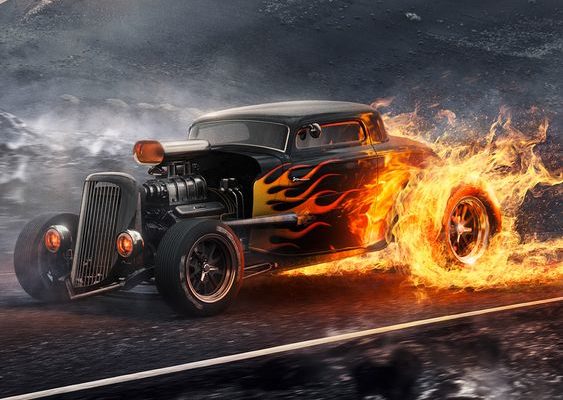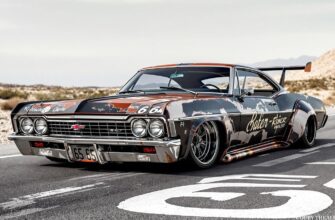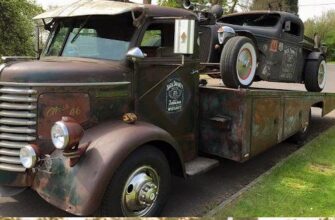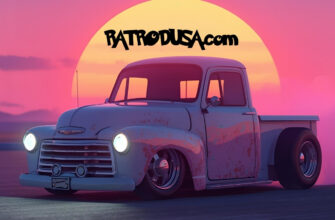This topic could explore the origins of Rat Rod culture, from its roots in hot rodding and drag racing to its rise in popularity in the early 2000s. It could also discuss the different styles of Rat Rods, from traditional to modern, and how the culture has evolved over time.

Rat rods are a unique and exciting type of custom car that has gained popularity in recent years. They are characterized by their rough-around-the-edges appearance, with exposed metal, rust, and dents adding to their character. Rat rods are typically built using salvaged parts from other vehicles, and they are meant to be driven and enjoyed, not just admired from afar.
The origins of rat rod culture can be traced back to the early days of hot rodding. In the 1930s and 1940s, young people began to modify their cars for speed and performance. These early hot rods were often built on a budget, and they didn’t always look perfect. But they were fast and fun to drive, and they helped to lay the foundation for the rat rod culture that we know today.
In the 1950s and 1960s, hot rodding evolved into a more polished hobby. Hot rodders began to focus on building cars that were both fast and stylish. But there was still a small group of enthusiasts who preferred the old-school look and feel of the early hot rods. These enthusiasts began to build rat rods, which were essentially rough-and-ready hot rods that were meant to be driven and enjoyed, not just admired from afar.
The term “rat rod” is thought to have originated in the late 1980s, and the culture began to gain popularity in the early 2000s. This was due in part to the popularity of television shows like “American Chopper” and “Monster Garage,” which featured builders creating custom cars and motorcycles with a rat rod aesthetic.
Today, there is a thriving rat rod community in the USA. There are rat rod clubs and events all over the country, and rat rodders come from all walks of life. What unites them is their love of classic cars and their appreciation for the unique style and character of rat rods.
Different Styles of Rat Rods
There are many different styles of rat rods, but they all share a few common characteristics. Rat rods are typically built using salvaged parts from other vehicles, and they are meant to have a rough-around-the-edges appearance. Some rat rodders prefer a traditional look, with exposed metal, rust, and dents. Others prefer a more modern look, with chopped tops, custom paint jobs, and high-performance engines.
Here are a few of the most popular styles of rat rods:
Traditional rat rods: These rat rods are built to look like the early hot rods of the 1930s and 1940s. They often have exposed metal, rust, and dents.
Modern rat rods: These rat rods are built using more modern components, such as chopped tops, custom paint jobs, and high-performance engines.
Rat trucks: These rat rods are built using pickup trucks as the base vehicle. They often have lifted suspensions, large tires, and custom paint jobs.
Rat sedans: These rat rods are built using sedans as the base vehicle. They often have chopped tops, custom paint jobs, and lowrider suspensions.
How Rat Rod Culture has Evolved
Rat rod culture has evolved over time, but it has always stayed true to its roots. Rat rods are still built on a budget, and they are still meant to be driven and enjoyed, not just admired from afar.
One of the biggest changes in rat rod culture has been the increasing use of modern components. In the early days of rat rodding, builders were limited to using salvaged parts from other vehicles. But today, there are many companies that produce aftermarket parts specifically for rat rods. This allows builders to create more unique and custom cars than ever before.
Another big change in rat rod culture has been the rise of social media. In the past, rat rodders relied on word-of-mouth to share their cars with the world. But today, rat rodders can use social media to connect with other enthusiasts from all over the globe. This has helped to grow the rat rod community and increase awareness of the culture.
The Future of Rat Rods
The future of rat rods is bright. The culture is continuing to grow, and there are more and more people building and driving rat rods than ever before.
One of the trends that is shaping the future of rat rodding is the increasing popularity of electric vehicles. Some builders are already starting to create electric rat rods, and it is likely that this trend will continue to grow in the coming years.
Another trend that is shaping the future of rat rodding is the use of 3D printing in car building. 3D printing allows builders
(62)









